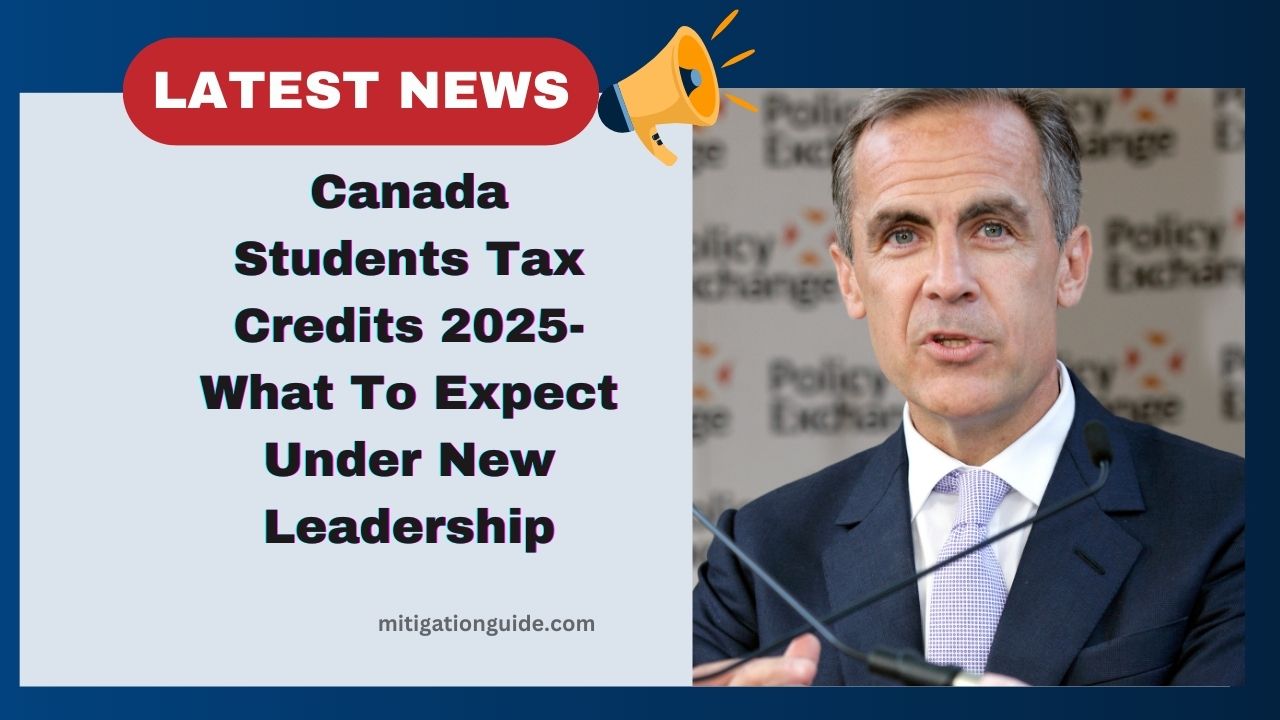With a new Canadian Prime Minister taking office in 2025, students and families across Canada are closely watching for any changes in financial support and tax benefits.
Fortunately, many of the student tax credits remain intact, with a few expected enhancements as the federal government shifts priorities.
This guide covers every major student tax benefit available in 2025 and outlines potential changes that could benefit students even further.
What’s New in 2025 With the New Prime Minister?
As of early 2025, a transition in government leadership is ushering in proposals aimed at providing financial relief to lower-income Canadians, including students. Key updates include:
- Conservative Platform: Proposing a 15% income tax cut on the lowest federal bracket. This benefits part-time students and recent graduates entering the workforce.
- Liberal Proposal: Pledging a 1% reduction in the lowest tax rate to ease financial burdens on low-income groups, including students.
- Both Parties: Continue to support education investment through workforce transition programs and training credits like the Canada Training Credit (CTC).
This means the core credits aren’t going anywhere, but the actual tax savings could grow based on which proposal moves forward.
Overview of Student Tax Credits in Canada for 2025
| Feature | Details (2025) |
|---|---|
| Tuition Tax Credit | 15% non-refundable credit for eligible tuition payments |
| Student Loan Interest | 15% credit on eligible interest from government student loans |
| Moving Expenses Deduction | Available for students moving 40km+ closer to school with taxable student income |
| Canada Training Credit (CTC) | Refundable $250/year credit; up to $5,000 lifetime |
| Saskatchewan Program | Graduate Retention Program: Up to $24,000 over 7 years |
| Tax Deadline | April 30, 2025 (June 15 if self-employed) |
Key Tax Credits Explained
1. Tuition Tax Credit
- What it is: A non-refundable credit to reduce income taxes owed.
- Value: 15% of your eligible tuition fees. For instance, $6,000 tuition = $900 tax credit.
- Transfer Option: Unused amounts (up to $5,000) can be transferred to a parent, spouse, or carried forward to future years.
- Required Form: T2202 from your educational institution.
2. Student Loan Interest Credit
- Eligibility: Must be interest on government-issued student loans only.
- Value: 15% of the interest paid (e.g., $300 interest = $45 credit).
- Carry Forward: Unused interest credits can be carried forward for up to 5 years.
- Tax Return Line: Line 31900.
3. Moving Expenses Deduction
Students relocating for post-secondary education can claim this deduction if:
- The move is at least 40 km closer to school.
- There is taxable income from part-time jobs, scholarships, or bursaries.
Eligible Expenses Include:
- Storage, moving trucks, and travel.
- Temporary accommodations (up to 15 days).
- Meals and vehicle-related costs.
Form Required: T1-M and report on line 21900.
4. Canada Training Credit (CTC)
This refundable credit is ideal for ongoing skills development.
- Value: $250/year, with a lifetime cap of $5,000.
- Eligibility: Age 26 to 65, minimum $10,000 income, and sufficient taxes paid the prior year.
- Claim Line: 45350 on your return.
Provincial Programs Worth Highlighting
Saskatchewan Graduate Retention Program
- Benefit: Up to $24,000 for students staying in the province post-graduation.
- Eligibility: Applies to those graduating after October 2024.
Ontario, Quebec, British Columbia
- Ontario: Offers provincial-level tuition and education credits.
- Quebec: Separate system with generous training and education deductions.
- BC: Offers tax relief through targeted student benefit programs.
Tools and Tips for Filing in 2025
Certified Tax Software
- TurboTax, Wealthsimple Tax, and StudioTax are all NETFILE-approved and offer student-friendly options.
CRA My Account
- Allows access to tuition records, benefit tracking, and refund status.
Free Tax Clinics
- CRA’s CVITP program assists eligible students with free tax filing.
Common Student Tax Mistakes to Avoid
- Not Filing: Even if no income, file to access benefits and credits.
- Missing Deadlines: Late filings may result in loss of credits or penalties.
- Ignoring Transfer Options: Transfer unused tuition credits to eligible relatives.
- Using Non-Government Loans: Only federal or provincial student loans are eligible for the interest deduction.
With a new Canadian Prime Minister and shifting federal priorities, student tax credits in 2025 are not only safe but may become even more beneficial.
Whether it’s tuition credits, loan interest deductions, or provincial programs like Saskatchewan’s retention credit, students should make the most of these savings tools.
Filing on time, staying informed, and leveraging all available credits can lead to significant financial relief throughout the year.
FAQs
Can I transfer unused tuition tax credits to a family member?
Yes, you can transfer up to $5,000 of unused credits to a parent, grandparent, or spouse.
Am I eligible for the Canada Training Credit in 2025?
If you’re aged 26–65, earned $10,000+, and paid enough tax the previous year, you are likely eligible.
What if I moved for school? Can I deduct the expenses?
Yes, if you moved 40 km or more closer and have eligible income, you can claim moving-related deductions.
